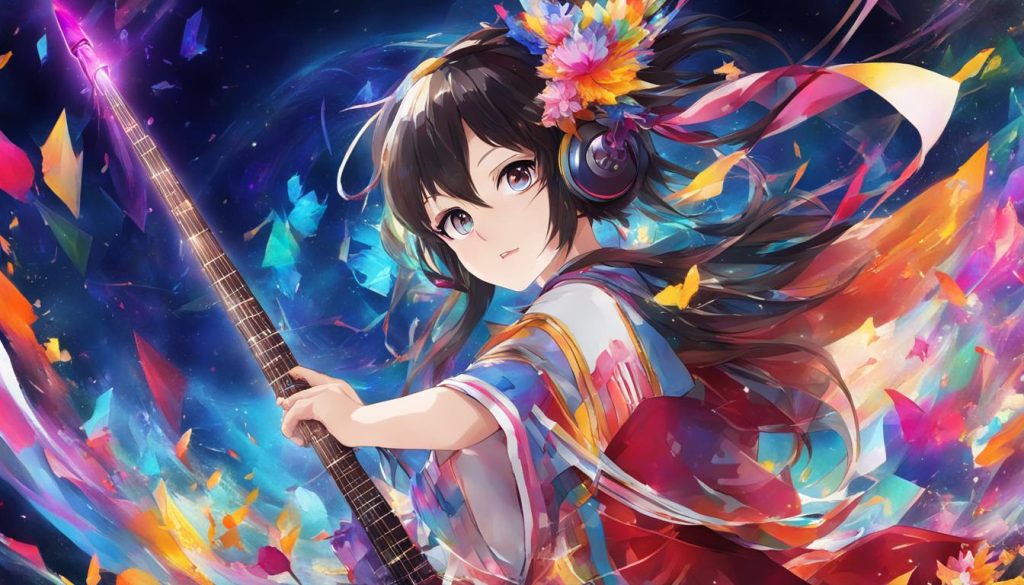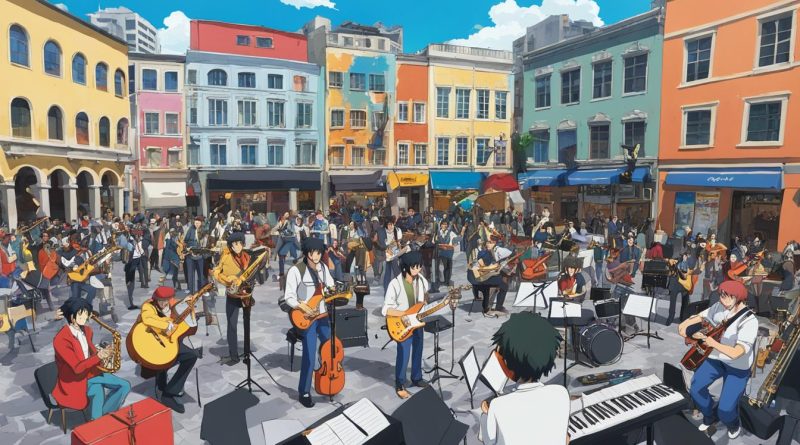Exploring the Vibrant World of Music & Arts
Music & Arts are essential facets of human life and have always played a significant role in shaping our cultural landscape. They are creative expressions that capture the depth and diversity of human experiences, transcending boundaries and promoting cultural exchange. From the antiquity of prehistoric times to the modern era of digital technology, music & arts have been a constant source of inspiration, innovation, and beauty.
This article takes a closer look at the vibrant world of music & arts, examining their trends, historical roots, and cultural impact. By exploring the dynamic nature of creative expressions, we can understand the pivotal role they play in our lives and society at large.
Key Takeaways
- Music & Arts are fundamental human expressions that shape our cultural identity.
- They reflect social and historical trends and unite communities across geographical and linguistic barriers.
- Understanding the historical context and evolution of music & arts is essential to appreciate their depth and diversity.
- The cultural impact of music & arts is profound, inspiring, and transformative.
- This article offers insights into the vibrant world of music & arts and their significance in our lives.
Uncovering the Trends in Music & Arts Today
As one of the most innovative and dynamic sectors, the music & arts industry keeps evolving, transforming, and adapting to changing times and audience tastes. This section explores the latest trends in music, visual arts, theater, and dance, highlighting the emerging styles, techniques, and themes that define the current creative expressions.

The music industry, for instance, is witnessing an explosion of genres, fusing old and new sounds, blending cultural traditions, and experimenting with technology and digital media. From hip-hop to EDM, alternative rock to K-pop, music is pushing the boundaries of creativity, challenging the status quo, and inspiring new generations of artists.
Visual arts are also experiencing a renaissance, with a renewed interest in traditional techniques such as painting, sculpting, and printmaking, combined with innovative approaches such as digital art, installation, and street art. Notably, street art has become a new form of public expression, illustrating social issues, cultural identity, and political activism.
Theater and dance are thriving, too, with the rise of experimental forms, immersive performances, and interdisciplinary collaborations. In recent years, there has been a shift towards more inclusive and diverse productions, tackling themes such as gender identity, race, and social justice.
Overall, the trends in music & arts reveal a dynamic and diverse landscape, defined by constant innovation, experimentation, and creativity. By staying abreast of the latest developments, artists, audiences, and industry professionals can ensure that the music & arts sector continues to thrive and inspire.
Exploring the Historical Roots of Music & Arts
The history of music & arts dates back to ancient times, where the earliest human cultures used them to tell stories, communicate, and express emotions. From the haunting melodies of traditional Chinese music to the elaborate choruses of Greek theatre, music & arts have played an essential role in shaping human civilizations.
One of the most significant milestones in music & arts history was the Renaissance period, a cultural movement that spanned from the 14th to the 17th century. It marked a significant shift in artistic expression, with painters, sculptors, poets, and musicians carving out new forms and techniques that celebrated the human form, nature, and the divine.
The classical music era, which emerged in the 18th century, is another significant milestone in music history. Composers such as Mozart, Beethoven, and Bach pioneered new forms and styles that showcased the technical prowess of the genre, elevating music to an art form. The emergence of jazz, blues, and rock and roll in the 20th century gave birth to new musical styles and subcultures, cementing the influence of music in popular culture.
“Without music, life would be a mistake.” – Friedrich Nietzsche
Throughout history, music & arts have reflected the values, beliefs, and societal norms of their time. They have been used to express dissent, spark revolutions, and challenge the status quo. The representation of black culture in music and art revolutionized the entertainment industry, creating a platform for the black community to express their struggles, pain, and joy.
The Diversity of Music & Arts Styles
The musical and artistic styles vary across different parts of the world, ranging from classical to folk, rock to blues, jazz to pop, and much more. Music & Arts history exemplifies the significant planetary cultural exchange and the way it has shaped our collective identity and cultural heritage.
| Music Genre | Roots |
|---|---|
| Blues | African American Communities |
| Samba | Brazilian Culture |
| Jazz | African American Communities |
| K-Pop | South Korean Pop Culture |
| Salsa | Cuban Culture |
By exploring music & arts history, we gain a deeper appreciation for the enduring legacy of creative expressions. They serve as a window into the human experience, connecting us across time and space, and highlighting the richness and diversity of our collective culture.
The Cultural Impact of Music & Arts
Music & Arts have a profound impact on culture, transcending boundaries and bringing communities together. They serve as mediums for cultural exchange and understanding, making them powerful tools for promoting unity and breaking down barriers. Throughout history, music & arts have played a significant role in shaping societies and identity formation.
The Role in Social Movements
Music & arts have been used to drive social movements, serving as a voice for the oppressed and marginalized. Songs have been used to express dissent, protest social injustice, and call for change. Notable examples include the civil rights movement in the United States, during which music played a significant role in expressing the struggle for equal rights and justice for all. Similarly, music has been instrumental in various global movements, including anti-war, anti-apartheid, and environmental campaigns.
The Power of Identity Formation
Music & arts play a crucial role in identity formation, helping individuals connect with their roots and cultural heritage. They serve as a means of expression and representation, often becoming symbols of cultural pride. Different styles of music and art forms have cultural significance attached to them, making them strong markers of identity. For example, traditional African drumming is an essential component of cultural identity for many African indigenous communities. Similarly, music has played a central role in different indigenous communities worldwide, promoting cultural heritage and helping maintain cultural continuity.

“Music and art have a powerful transformative effect on consciousness. They can influence the way we see the world, what we think and how we act. When art is truly great, it has the power to heal, inspire and broaden our perspectives in unimaginable ways.” – Carlos Santana
The Promotion of Cultural Preservation
Music & arts are essential for cultural preservation, as they help keep cultural heritage alive and relevant. They provide a platform for sharing traditional knowledge, history, and values, making them significant in promoting cultural continuity. Through art and music, we can learn about different cultural practices, beliefs, and ways of life, fostering cultural exchange and understanding. Artifacts, music, and art objects that are passed on from one generation to another become cultural artifacts, representing a tangible link to the past.
Conclusion
Through the exploration of the vibrant world of music & arts, this article has uncovered the various trends, historical roots, and cultural impacts that define these creative expressions. Today, music & arts continue to evolve, adapt, and inspire, forging new paths of cultural exchange and understanding.
By examining the past, present, and future of music & arts, we gain a deeper appreciation for their significance in our lives and their role in shaping the human experience. Whether through the celebration of diversity, the expression of personal identity, or the cultivation of social change, music & arts have the power to connect us across time and space, transcending language, race, and borders.
In conclusion, music & arts offer a unique lens through which we can view the world and our place in it. Through their rich history, diverse expressions, and cultural impacts, they provide a source of inspiration, reflection, and connection. As we continue to navigate the complexities of modern life, music & arts offer a guiding light, reminding us of the universal truths that unite us all.
FAQ
What topics are covered in the section “Exploring the Vibrant World of Music & Arts”?
The section “Exploring the Vibrant World of Music & Arts” covers various topics related to music & arts, including trends, historical aspects, and cultural impacts.
What is the focus of the section “Uncovering the Trends in Music & Arts Today”?
The section “Uncovering the Trends in Music & Arts Today” focuses on exploring the current trends within the music & arts industry, including developments in music, visual arts, theater, and dance.
What does the section “Exploring the Historical Roots of Music & Arts” discuss?
The section “Exploring the Historical Roots of Music & Arts” takes a journey through the rich history of music & arts, exploring significant milestones, influential movements, and iconic figures that have shaped artistic endeavors.
How does the section “The Cultural Impact of Music & Arts” emphasize the significance of music & arts?
The section “The Cultural Impact of Music & Arts” highlights how music & arts transcend boundaries, bring communities together, and play roles in social movements, identity formation, and cultural preservation.
What does the conclusion of the article on music & arts cover?
The conclusion wraps up the exploration of the vibrant world of music & arts, summarizing the trends, history, and cultural impacts that define creative expressions and their significance in our lives.
